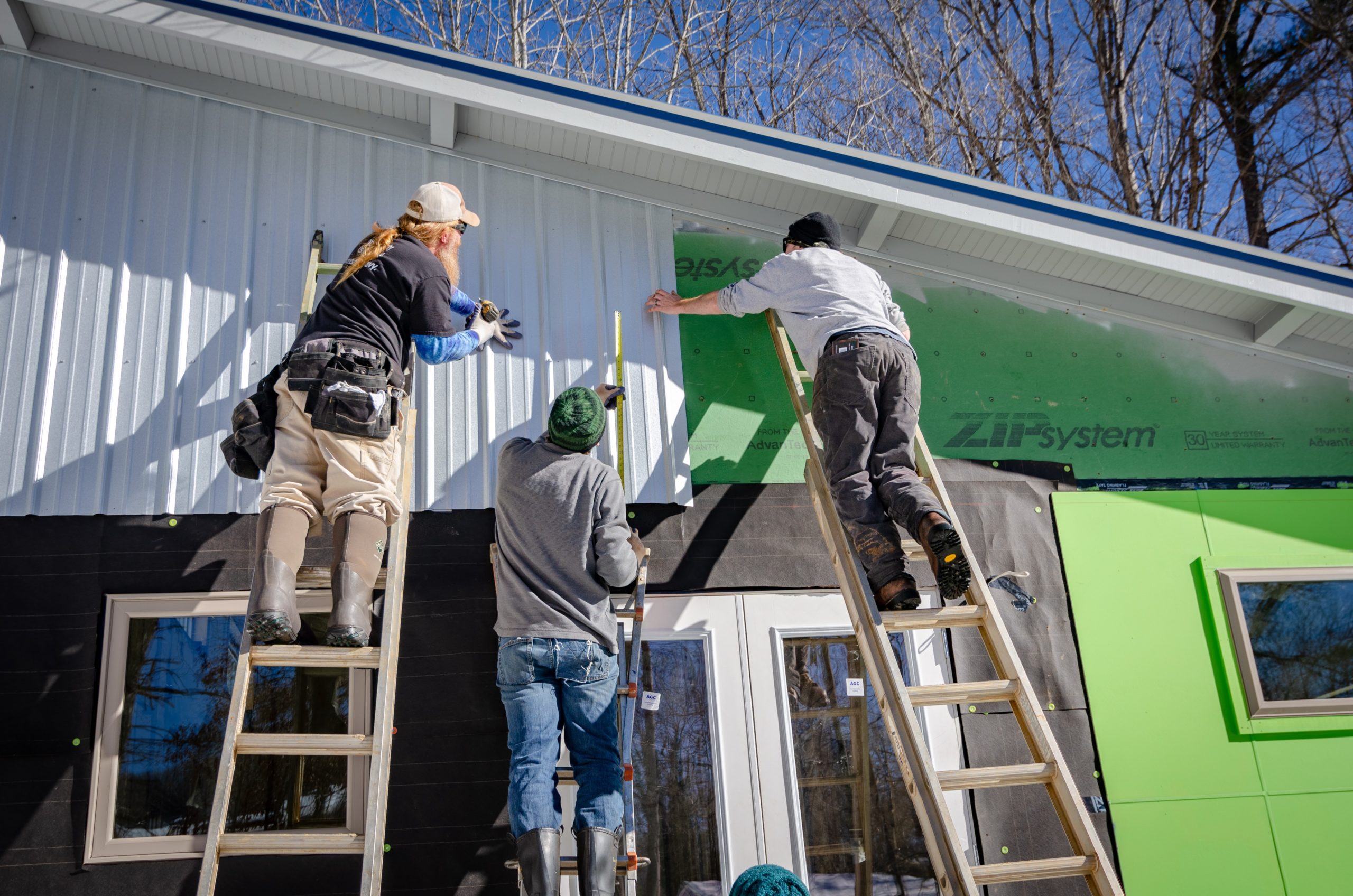Before buying a home it is essential to carry out an inspection of it. These inspections are not mandatory, but they are very necessary because you will have the relevant information on the conditions of the property and know if you are paying a fair price for it.
It is important to have a qualified inspector, who offers objective information. In the United States, the American Society of Home Inspections is the one who dictates the standards to follow in home inspections.
What elements does the inspection contemplate?
- The structural components of the property including the foundations.
- Exterior areas: wall coverings, flashings and moldings, exterior doors, attached and adjacent terraces, balconies, porches, steps, porches and their associated railings, eaves, soffits and fascias where accessible from ground level, vegetation, leveling, drainage surface and retention, walls that may adversely affect the building, driveways, patios and driveways.
- Ceilings: materials, ceiling drainage systems, skylights, chimneys, and ceiling penetrations.
- Plumbing: indoor water supply and distribution systems, including fittings and taps, indoor drain, drain and vent systems, including fixtures, hot water and hot water supply equipment, vent systems, fuel storage and fuel systems fuel distribution, sewage ejectors, sump pumps and related pipes.
Electrical System: Service of input conductors, cables and conduits, service equipment and main disconnects, grounding service, interior components of service panels and sub-panels, conductors, overcurrent protection devices, a representative number of accessories of installed lighting, switches and receptacles, ground fault circuit interrupters and arc fault circuit.
- Heating: installed heating equipment, ventilation systems, fireplaces and distribution systems.
- Air Conditioning: permanently installed central cooling equipment, distribution systems.
- Interiors: Walls, Ceilings and Floors, Steps, Stairs and Railings, Countertops, and a Representative Number of Cabinets Installed, a Representative Number of Doors and Windows, Installed Ovens, Kitchens, Surface Kitchen Appliances, Microwave Ovens, Dishwashers, and Food , waste mills.
- Insulation and ventilation: Insulation and vapor retarders in unfinished spaces, ventilation of attics and foundations, kitchen, bathroom, laundry and similar exhaust systems, exhaust systems of clothes dryers.
- Fireplaces and Fuel Appliances: Fireplaces, stoves, and inserts for fireplaces that burn fuel, accessories for burning fuel installed in fireplaces, and ventilation systems.
The inspector will provide you with a report indicating:
- if there are safety issues, if a minor repair is required, or if there is a major defect.
- Which elements need to be replaced, which require repair or maintenance?
- Which elements are suitable for use but must be watched by the buyer.
With the information received, you can make your informed purchase decision: If there are elements of weight (an unfavorable weight in the inspection) you can withdraw your offer as a buyer or if you want a reduction in the sale price of the property.
Antes de comprar una vivienda es fundamental realizar una inspección de la misma. Estas inspecciones no son obligatorias, pero sí muy necesarias porque tendrá la información pertinente sobre las condiciones en que se encuentra el inmueble y saber si está pagando un precio justo por él.
Es importante contar con un inspector calificado, que ofrezca información objetiva. En Estados Unidos, la American Society of Home Inspections es quien dicta los estándares a seguir en las inspecciones de vivienda.
¿Qué elementos contempla la inspección?
- Los componentes estructurales del inmueble incluidos los cimientos.
- Áreas exteriores: revestimientos de paredes, tapajuntas y molduras, puertas exteriores, terrazas adjuntas y adyacentes, balcones, pórticos, escalones, porches y sus barandas asociadas, aleros, plafones y fascias donde sea accesible desde nivel del suelo, vegetación, nivelación, drenaje superficial y retención, paredes que puedan afectar negativamente la edificación, calzadas, patios y entradas de vehículos.
- Techos: materiales, sistemas de drenaje del techo, tragaluces, chimeneas y penetraciones de techo.
- Fontanería: sistemas de distribución y suministro de agua interior, incluyendo accesorios y grifos, sistemas de drenaje interior, desagüe y ventilación, incluidos accesorios, equipo de calentamiento de agua y suministro de agua caliente, sistemas de ventilación, almacenamiento de combustible y sistemas de distribución de combustible, eyectores de aguas residuales, bombas de sumidero y tuberías relacionadas.
- Sistema eléctrico: Servicio de conductores de entrada, cables y conductos, equipos de servicio y desconexiones principales, servicio de puesta a tierra, componentes interiores de paneles de servicio y subpaneles, conductores, dispositivos de protección contra sobrecorriente, un número representativo de accesorios de iluminación instalados, interruptores y receptáculos, interruptores de circuito de falla a tierra y circuito de falla de arco
- Calefacción: equipo de calefacción instalado, sistemas de ventilación, chimeneas y sistemas de distribución.
- Aire Acondicionado: equipo de enfriamiento central y permanentemente instalado, sistemas de distribución.
- Interiores: paredes, techos y pisos, escalones, escaleras y barandas, encimeras y un número representativo de gabinetes instalados, un número representativo de puertas y ventanas, hornos instalados, cocinas, electrodomésticos de cocina de superficie, hornos de microondas, lavavajillas y alimentos, molinos de residuos.
- Aislamiento y ventilación: Aislamiento y retardadores de vapor en espacios inacabados, ventilación de áticos y cimientos, cocina, baño, lavandería y similares sistemas de escape, sistemas de escape de secadoras de ropa.
- Chimeneas y aparatos de combustible: chimeneas, estufas e insertos para chimeneas que queman combustible, accesorios para quemar combustible instalados en chimeneas y sistemas de ventilación.
El inspector le entregará un informe que indicará:
- Si existen problemas de seguridad, si se requiere una reparación menor o existe un defecto importante.
- Cuáles elementos necesitan ser reemplazados, cuáles requieren reparación o mantenimiento.
- Cuáles elementos son adecuados para su uso pero deben ser vigilados por el comprador.
Con la información recibida usted puede tomar su decisión de compra bien fundamentada: Si existen elementos de peso (una ponderación desfavorable en la inspección) puede retirar su oferta como comprador o si desea una reducción en el precio de venta del inmueble.


Leave a Reply